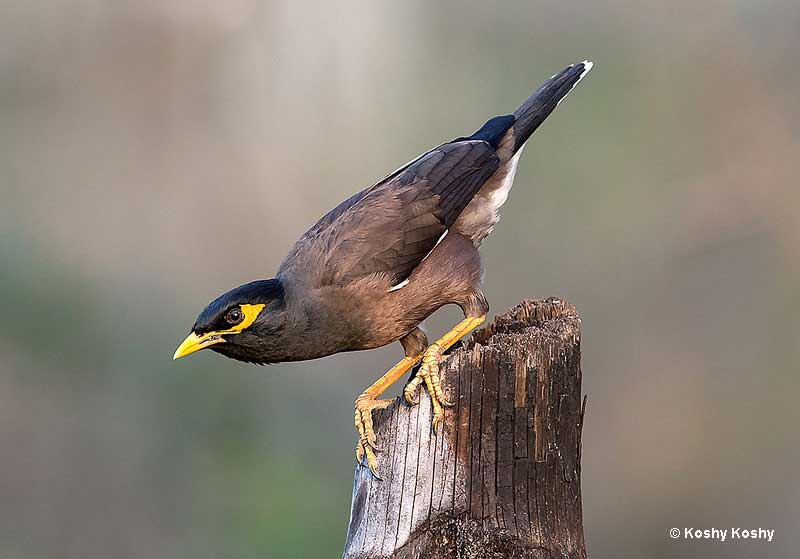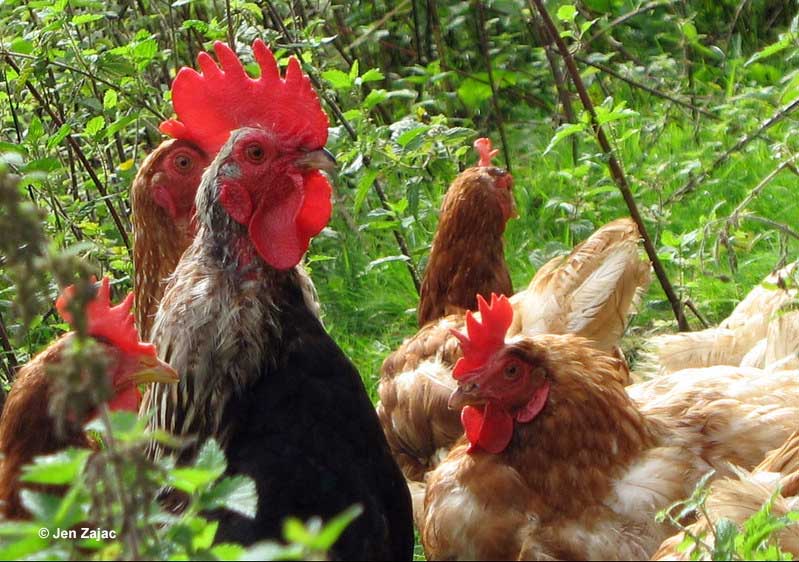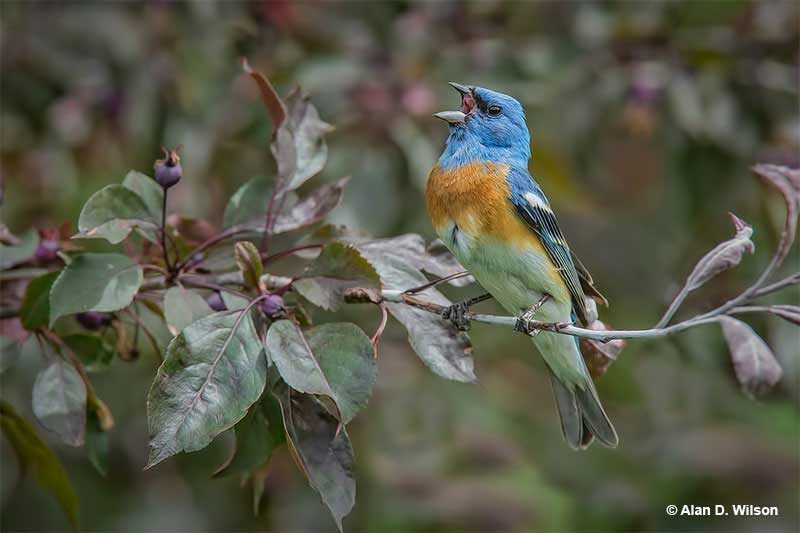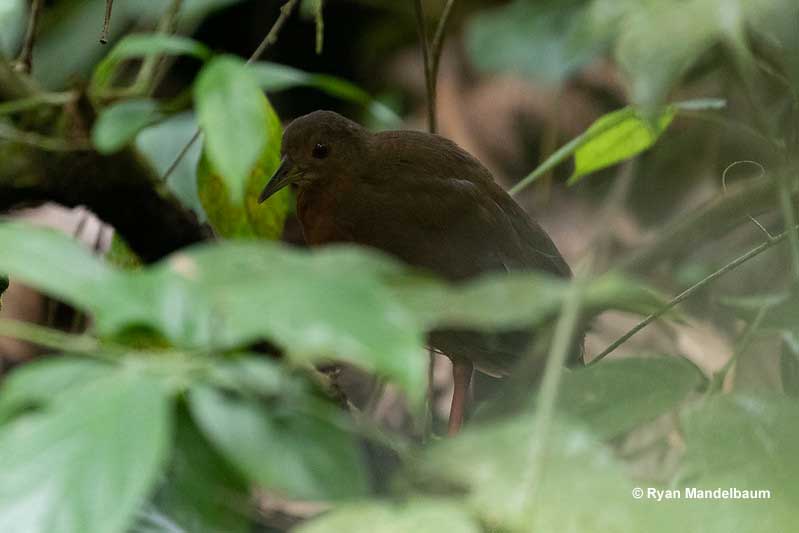Birds come in all sorts of shapes and sizes. They also come in all sorts of names! There are hundreds of names for birds, some familiar, others much less common.
There are more than three dozen, four letter bird names. To learn about these names, we made a list of them with descriptions for each one.
What is an “Erne”? What are “Guans”, Kagus”, and “Kakas”?
See this article for answers and more about bird names with four letters!
Chat
A “Chat” is a name for a small, usually vocal bird. In North America, a “chat” refers to the Yellow-breasted Chat, a unique, sparrow-sized bird with a yellow throat and breast, and white spectacles.
In other parts of the world, chats are small, understory birds that often have colorful plumage.
Cock
Cock is another name for a male bird, especially a rooster. It’s a rather outdated term, but people in some regions still use it. It’s often used for males of other chicken-like bird species but can also work when describing any male bird.
For example, Cock Robin can refer to a male European Robin.
Coly
Coly is another old term, mostly in reference to songbirds like the Eurasian Blackbird. It was also used for other thrushes and various other birds that sing nice songs.
However, a Coly can also be any of the “Mousebird” species that live in Africa. Mousebirds are in the Coliidae family.
Coot
Although some people might call an old bald man, a “Coot”, whether they know it or not, they’re talking about a waterbird!
Coots are duck-like members of the rail family with blackish plumage, and white, stubby beaks. We can see them on lakes and marshes in many parts of the world.
Crow
A Crow is a noisy, big member of the Corvid family with glossy black plumage. Whether people like them or not, Crows are common and familiar birds in many parts of the world.
Although different species live in different regions, most Crows are social and intelligent birds with similar behaviors.
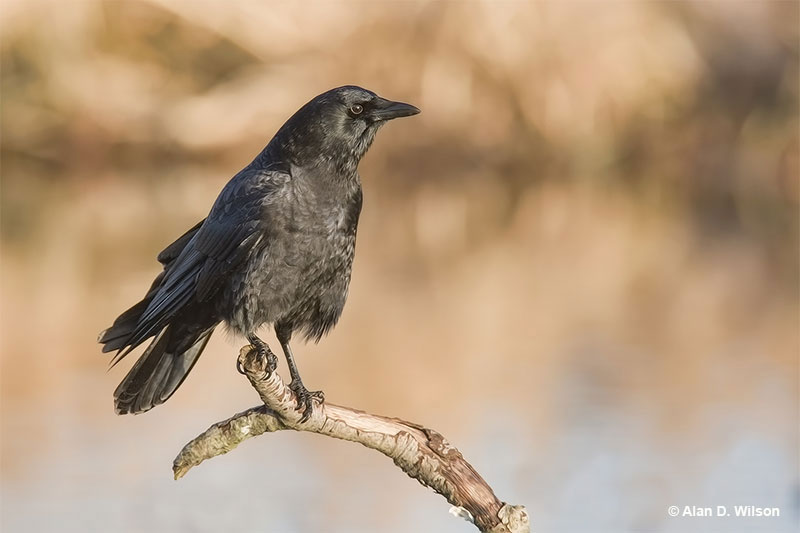
Dodo
The Dodo was a big, unique pigeon that only lived on the island of Mauritius. Since it evolved on a small, predator-free island, the Dodo had very small wings, was flightless, and showed no fear.
Unfortunately, these attributes didn’t keep it from being extinguished by people and introduced predators in the 17th century.
Dove
A dove is a well-known variety of bird in the same family as pigeons. Doves occur in most parts of the world and can live in a wide variety of habitats. Several species are very common and also visit feeders.
In general, Doves are smaller and more elegant than pigeons, and many also have longer tails.
Duck
A duck is another very familiar bird. Ducks are aquatic birds with webbed feet and stubby or flat beaks. There are more than 100 species of ducks, many of which have plumage with beautiful iridescent patches and intricate patterns.
Most ducks are also social birds that flock together and migrate long distances between breeding and wintering grounds.
Erne
An erne is an old English name for the White-tailed Eagle. These big raptors are the Eurasian counterpart of the Bald Eagle. Like Bald Eagles, ernes live near lakes, coastal habitats, and other wetlands.
They also catch fish, feed on carrion, and hunt various waterbirds. Ernes are dark brown with pale brown heads and a white tail.
Eyas
An eyas is an old word mostly used in falconry. It refers to baby hawks and falcons taken out of the nest for training.
For falconry, it’s important to work with an Eyas to train the bird from a young age. They can be trained to hunt larger prey than normal and bring animals back to their trainer.
Fowl
Fowl is an old term that used to refer to any type of bird. In modern times, it mostly refers to the types of birds that are hunted most often.
Those would be members of the Galliformes and Anseriformes. In other words, we are talking about grouse, turkeys, other chicken-like birds, ducks, geese, and swans.
Guan
Guan is a name for arboreal, turkey-like birds that live in tropical forests from Mexico to Argentina. Most Guans have dark brown plumage with bits of white and some red on their throat.
There are also Guan species with ‘black, or black and white plumage. Sadly, many Guans are threatened by hunting.
Gull
A Gull is a well-known term for several members of the Laridae, or Gull and Tern family. Although a lot of people call them “Seagulls”, the real, correct term is “Gull”!
Several Gull species live in many parts of the world. They have gray or blackish upperparts, white underparts, and strong, slightly hooked beaks.
Hawk
A “Hawk” is another, well-known term. This word is used for various, small to medium-sized raptor species with sharp talons and hooked beaks.
Hawks hunt small animals in all sorts of habitats everywhere except Antarctica. They can soar high overhead, watch for rodents from high perches, and even stalk your backyard feeders!
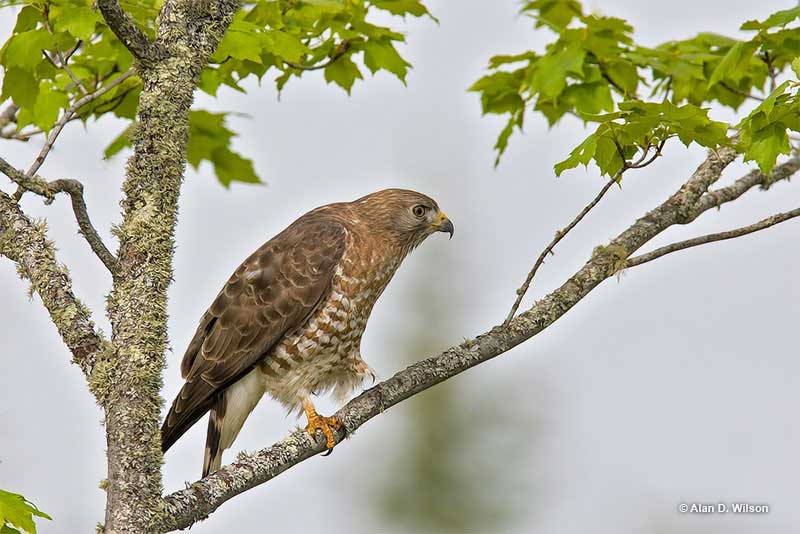
Huia
The “Huia” was a crow-sized bird endemic to New Zealand. It was black with orange wattles on its face, and a white tip on its tail. Males had a sharp, stout bill while females had a long, curved beak!
Although this rare bird was sacred to Maori culture, sadly, it went extinct in the early 20th century.
Ibis
“Ibis” is the name for several types of wading birds with long, curved beaks. They also have long legs, short tails, and big, broad wings.
There are 30 Ibis species, most living in places with warm climates. Many are dark brown or dark green but a few species are mostly white, and one is scarlet red!
Kagu
The “Kagu” is a unique, chicken-sized bird that is the sole member of its family. It only lives on the island of New Caledonia, is flightless, and pale gray with a fluffy crest. The Kagu also has a stout orange beak, orange legs, and a bold barred pattern on its wings.
Kaka
The “Kaka” is a large, purple-brown parrot with some red feathering on its body and pale feathers on its head. This unique bird has a big, hooked beak and only lives in lowland and middle elevation native forest parts of New Zealand.
Kakas are social birds that mostly feed on fruit, nectar, and seeds.
Kite
A “Kite” is the name for various hawk-like raptors, some of which spend a lot of time soaring and swooping in elegant flight. Most have smaller talons than hawks, and catch smaller prey items like insects, snails, and frogs.
Kite species live in most parts of the world, especially regions with warm climates.
Kiwi
A “Kiwi” isn’t just a tangy fruit or someone from New Zealand. It’s also a type of unique, terrestrial and nocturnal bird.
Kiwis are flightless, and have hair-like feathers and short, strong legs. They only occur in New Zealand and use their long beaks to forage on the ground for worms and other bugs.
Knot
A “Knot” is a name for two species of sandpipers. One, the Red Knot has orange or gray plumage and is a common coastal migrant from the Arctic. The other species is the Great Knot, an endangered Asian species that migrates to southern Asia and Australia.
Both species can form large, “knot-like” flocks.
Koel
A “Koel” is a type of cuckoo that lives in southern Asia and Australasia. There are five species of Koel and all have long tails. They can be brown, have barred brown plumage, or glossy black with red eyes.
They get their name from the Asian Koel, a common bird that frequently says its name, “Ko-el!”.
Kuku
“Kuku” is another name for “cuckoo”. These long-tailed birds are well known in many parts of the world. In Eurasia, Kukus (Cuckoos) often make calls that sound like their name, “cu cu…cu cu”. Cuckoos in other places sound different but most have long tails, and long or strong, arched beaks.
Lark
A “Lark” is a small bird with pale brown plumage that lives in open habitats. There are many lark species but most live in Eurasia, Africa, and Australasia.
In North America, we have the Horned Lark. This pretty, pale brown and yellow bird has black on and near its head, and a pair of tiny feathered “horns”.
Loom
A “Loom” is an old term for aquatic birds that have trouble walking on land. Those birds include Loons, Grebes, and Murres and other Auk species.
All of these birds spend most of their lives on water. On occasion, they mistake parking lots at night for bodies of water. After landing, they can’t take flight!
Loon
A “Loon” isn’t a maniacal person. However, it is the name for five species of waterbirds that make loony or loud, laughter-like calls!
Loons are big birds that dive underwater to catch fish and crustaceans. They breed on northern lakes and wetlands, and migrate to coastal waters for the winter.
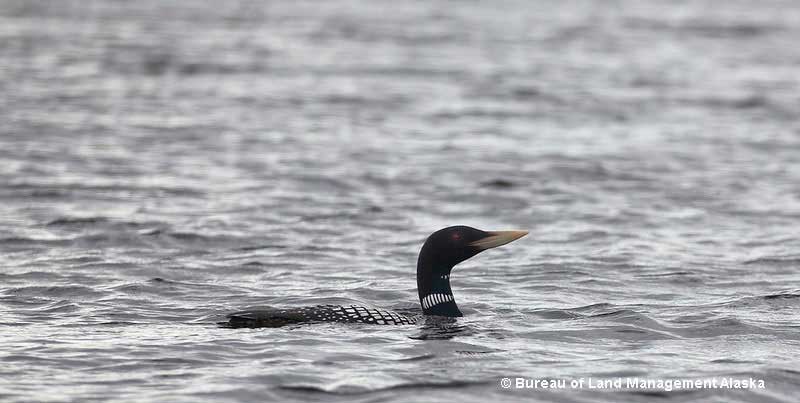
Lory
A “Lory” is a type of small parrot that lives on Pacific Islands, Indonesia, and New Guinea. There are several species and most have gaudy, bright-colored plumage.
They can be deep red and blue, green with red, or even brownish with golden highlights! One species, the Black Lory, is black with a yellowish tail.
Merl
The word “Merl” is an old Scots name for the Common Blackbird. Also known as the Eurasian Blackbird or “Merle”, this species is one of the more common garden birds in Europe.
It sings a lot like an American Robin, eats berries, and also forages on the ground for worms and bugs.
Mina
“Mina” is another term for the “Mynah Bird”. Minas are members of the starling family that mostly live in Asia. Some are incredibly good at mimicry and, for this reason, have become popular pets.
In the wild, Minas forage for figs and other fruit in the canopy of tropical forests.
Myna
“Myna” is the most commonly used word for species of “Mynah Birds”. These colorful starling species are mostly native to tropical habitats in Asia. Most Mynas have dark gray or black plumage with some white and yellow patches.
They are intelligent birds that can mimic human voices very well, and feed on fruit and insects.
Nene
The “Nene” is a Hawaiian name for a goose species that only lives on the Hawaiian Islands. Nenes are related to the Canada Goose, and sort of resemble that familiar bird but are smaller, have buff on their neck, and more patterned plumage.
They have the smallest range of any living goose.
Rail
A “Rail” is a type of bird that typically lives in marshes and other dense, wet vegetation. There are dozens of species of rails, some the size of a Robin, others as big as roosters.
Rails live in most parts of the world and even occur on remote islands. Some are flightless and most are hard to see.
Rhea
A “Rhea” is the name for two species of large, flightless birds that live in South America. Greater and Lesser Rheas look a bit like Ostriches and Emus, run fast, and also live in open habitats.
Rheas feed on seeds, fruit, and small animals, and have hair-like feathers, dull plumage, and long, strong legs.
Rook
A “Rook” is a type of Eurasian crow. Like other crow species, Rooks have glossy black plumage, but the front part of their face has pale, bare skin.
These birds from large and noisy flocks. They often roost in big trees in parks and cemeteries, and forage on open ground for insects and grain.
Ruff
A “Ruff” is a Eurasian sandpiper species. The Ruff gets its name from the male’s breeding plumage with a shaggy, feathered collar.
The rest of their plumage and that of female Ruffs (known as a “Reeve”), is mottled gray and brown with white on their rump, and orange on their legs and base of their beak.
Shag
A “Shag” is the name for some Cormorant species. Most “Shags” live on or near New Zealand, usually on islands.
The species simply known as the “Shag” is a black cormorant with a small crest, bit of yellow on its face, and slender black beak. It lives in coastal habitats with cliffs in western Europe.
Skua
A “Skua” is a type of large, gull-like, predatory seabird. Three Skua species live in cold southern oceans while the Great Skua lives in the far north.
Skuas have brown plumage with a pale patch on each wing, and stout, hooked beaks. They eat carrion and small animals, and often catch small birds.
Smew
A “Smew” is a small duck with a short, narrow beak that breeds on cold, northern lakes and wetlands in Eurasia. Males are white with some black, especially on their wings, tail, and face.
Female Smews are mostly dark gray above, white below, and have a rusty cap and nape, and a white throat.
Sora
A “Sora” is a small, plump rail species with a stout yellow beak. They are mottled brown above, and mostly gray below with white barring on their sides, and black on their face and throat.
Soras breed in a variety of marsh and wetlands habitats in North America, and winter from the southern USA to Central America.
Swan
A “Swan” is a type of huge waterfowl with a long neck, and big, broad wings. There are seven species of swans, most of which are white with some color on their beaks. However, one species has a black neck, and another has black plumage.
Swans live in marshes and other shallow wetlands.
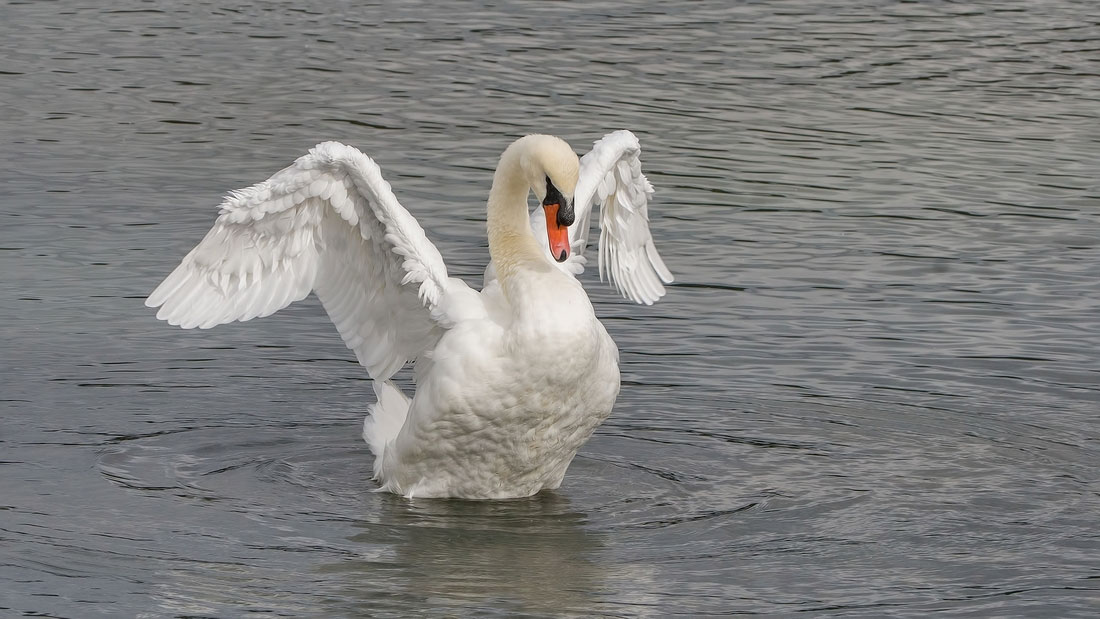
Teal
A “Teal” is a type of small duck that dabbles in shallow water. The “original Teal” is the Common or Green-winged Teal. The dark green color in its plumage has also given rise to using the word “teal” to describe that and similar shining blue-green colors.
Teals inhabit shallow marshes and wetlands in many parts of the world.
Tern
A “Tern” is a type of pale, elegant seabird in the Gull family. There are several species of terns and most have slender, sharp beaks and long, pointed wings.
Some also have long, forked tails, and most dive for small fish in lakes, rivers, marshes, and oceanic waters.
Tody
A “Tody” is a type of small and colorful bird that only lives in the Caribbean region. These toy-like birds are bright green above, have dark pink throats, and varying amounts of yellow and pink on their underparts.
They also have slender beaks that they use to catch insects and other small creatures.
Weka
A “Weka” is a fairly large, chicken-like, flightless brown rail with strong legs, and a stout beak. This unique bird also has a longish tail and only lives in New Zealand.
Wekas live in many habitats with open vegetation they can move through. These birds are omnivores that eat vegetation, fruit, insects, and small animals.
Wren
A “Wren” is a tiny, brown bird with a sharp beak that often cocks its tail up, and frequently sings. The original “Wren” from Eurasia is similar to the House Wren and Winter Wren.
However, other wren species can have longer tails and brighter, red-orange plumage. Most live in tropical habitats from Mexico to Argentina.
